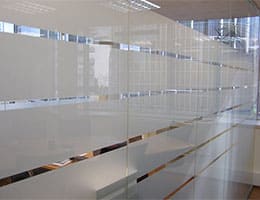 Grinding is a term that comes from the verb emerilar : to treat something with emery or a similar substance. Emery, for its part, is a dark and very hard mineral that is used for polishing and deglossing.
Grinding is a term that comes from the verb emerilar : to treat something with emery or a similar substance. Emery, for its part, is a dark and very hard mineral that is used for polishing and deglossing.
This mineral is made up of corundum as the main component, although it also includes rutile, magnetite and other elements . Industrial emery can also include synthetic compounds such as silica and magnesia.
Grinding is achieved by polishing a glass, metal or gemstone with emery. Depending on how it is applied and on what type of product , different results are obtained.
Frosted glass , for example, is translucent, although it prevents you from seeing clearly what is behind it. That is, it allows light to disperse, but it affects visibility.
Frosted glass has different uses. These glasses are often used to gain privacy. They can also be used for decorative purposes or to achieve uniform light distribution in certain contexts and areas.
Sometimes, frosting is achieved by applying a film to the glass. This frosted film is self-adhesive: it is a sheet that sticks and can then be removed, unlike what happens when frosting is done by polishing the glass itself. The effect is similar, allowing light to pass through the glass but, at the same time, providing privacy.
To remove part of the material from a surface until it is completely smooth and prepared for different applications, there are three mechanisms: lapping, polishing and grinding, each of which leaves certain deformations in the resulting sample. These are three processes that seek to meet the following objectives:
* all structural elements must be preserved;
* there should be no major deformations or scratches on the surface;
* the sample must not present foreign objects as a result of the abrasion process;
* the result should be a highly reflective and flat surface;
* It is important to aim for the lowest price and it is essential that the samples can be reproduced exactly.
 In the process to remove excess material mechanically, the first step is precisely grinding. The objective is to make the damaged or deformed parts smooth and reduce the percentage of additional deformation to a minimum, so that when moving on to polishing the last defects can be eliminated, all in the shortest possible time. For grinding, abrasive particles are used (they are called cutting abrasive grains ) that generate chips from the sample. The removal rate achieved by grinding is very high.
In the process to remove excess material mechanically, the first step is precisely grinding. The objective is to make the damaged or deformed parts smooth and reduce the percentage of additional deformation to a minimum, so that when moving on to polishing the last defects can be eliminated, all in the shortest possible time. For grinding, abrasive particles are used (they are called cutting abrasive grains ) that generate chips from the sample. The removal rate achieved by grinding is very high.
Grinding is made up of two well-defined processes: flat grinding and fine grinding. The drawing is usually the first to be carried out, as it gives us the guarantee that all sample surfaces have a similar finish, regardless of their condition and previous treatments . This is achieved in part because all the samples are placed on a support at the same time, to control at all times that they all reach the same level before moving on to fine grinding.
Fine grinding seeks to finish the work that begins with the plane, so that the surface is ready for polishing. While it can be done with specialty papers, composite surfaces are preferred to make the process easier and more effective. They are very hard discs that are manufactured with a composite material that offers a better result than paper sheets.
It should be noted that the use of emery to sharpen and shape different cutting instruments is also called grinding.
